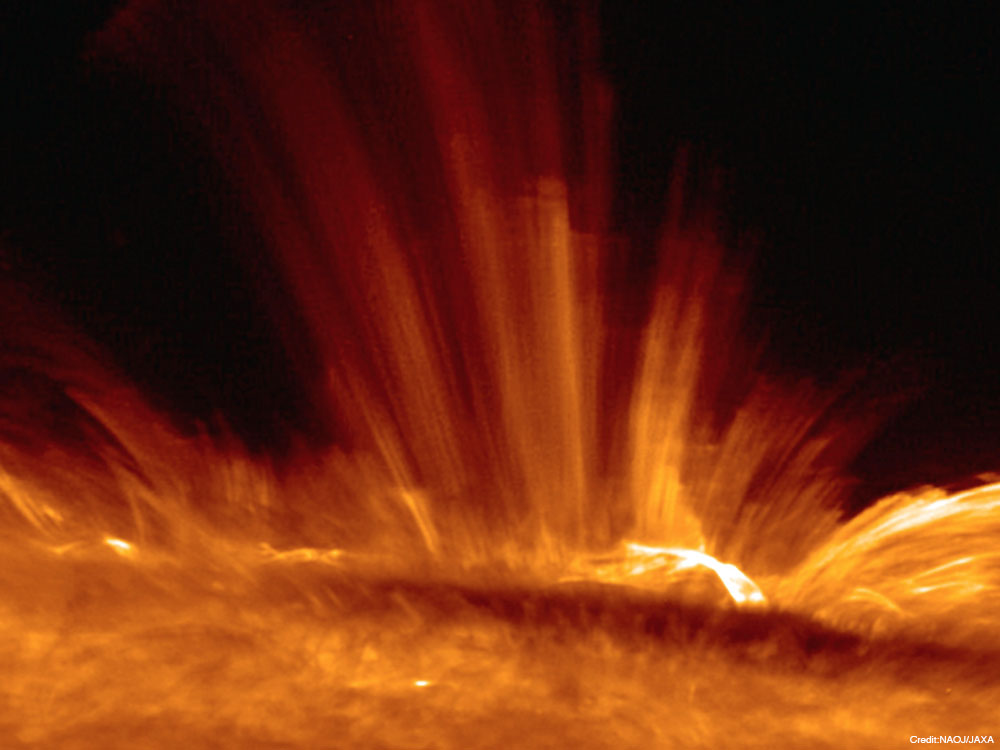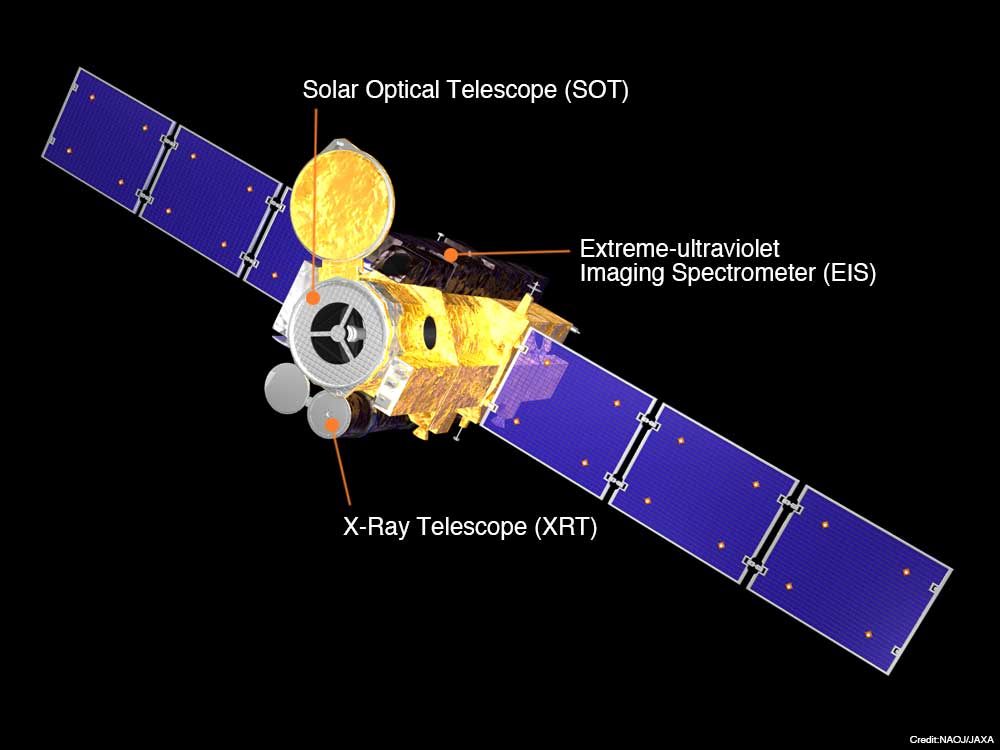What is the Solar Observing Satellite “Hinode”?
The Solar Observing Satellite “Hinode” was launched from the Uchinoura Space Center (USC) of the Japan Aerospace Exploration Agency (JAXA) on September 23, 2006. Hinode can observe the Sun in three different wavelength ranges: visible light, extreme-ultraviolet, and soft X-rays. It can simultaneously observe the atmospheric structure, which is composed of the photosphere of 5,800 kelvins and the hot outer atmosphere up to the corona of 1,000,000 kelvins, at high resolution. Like the highly successful “Yohkoh”, “Hinode” was developed through international collaboration among Japan, the United States of America, and the United Kingdom, with European countries also participating in its operation. In the Hinode program, Japan made the satellite bus system, the main body of the optical telescope, and the X-ray telescope camera. Hinode has made various achievements for more than 15 years since its launch and it is still actively functioning.

Research
Hinode has found waves traveling along magnetic field lines and has shown examples of waves heating the corona. These results may help to solve the longstanding “coronal heating problem.” By cooperating with research activity using numerical simulations, we have also discovered magnetic structures that trigger solar flares and have revealed how sunspots are formed after the rise of the magnetic flux below the surface and the generation mechanism of the jets that occur near sunspots.
Specifications

| Launch | At 6:36 am, September 23, 2006 (Japan Standard Time, JST). |
|---|---|
| Launch Rocket | M-V-7 rocket |
| Satellite Weight | ~900 kilograms |
| Overall length | ~4 meters |
| Paddle blade width | ~10 meters |
| Orbit | Sun-synchronous polar orbit, altitude ~680 kilometers |
History
| September 23, 2006 | Launched at 6:36 am (JST). |
|---|---|
| October 23, 2006 | X-Ray Telescope (XRT) first light. |
| October 25, 2006 | Solar Optical Telescope (SOT) first light. |
| October 28, 2006 | Extreme-ultraviolet Imaging Spectrometer (EIS) first light. |
| May 1, 2007 | Hinode Science Center started. |
| February 25, 2016 | Finished observations with the Solar Optical Telescope and concentrated on polarization spectroscopy. |
| September 2, 2016 | 10th anniversary of launch. |
| April 3, 2017 | Solar Science Observatory started. |
| September 23, 2021 | 15th anniversary of launch. |
Related Project
Main Research Results
- Hidden Solar Nanoflares Confirmed by Ultra-high Sensitivity Observations (Japanese language only, Solar Science Observatory)
- Polar Field Reversal as observed with Hinode (Japanese language only, Solar Science Observatory)
- A joint observation by solar observing satellites Hinode and IRIS quantitatively explores the formation of the solar chromosphere
- Mechanism of explosions and plasma jets associated with sunspot formation revealed
- Hinode, IRIS, and ATERUI Cooperate on 70 year old Solar Mystery: Magnetically driven resonance helps heat the Sun’s atmosphere!
